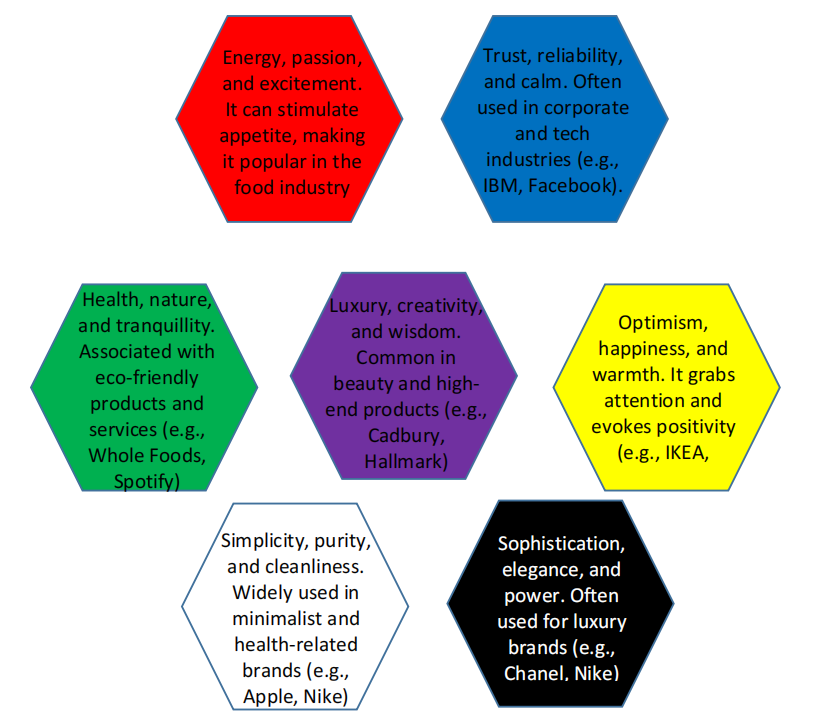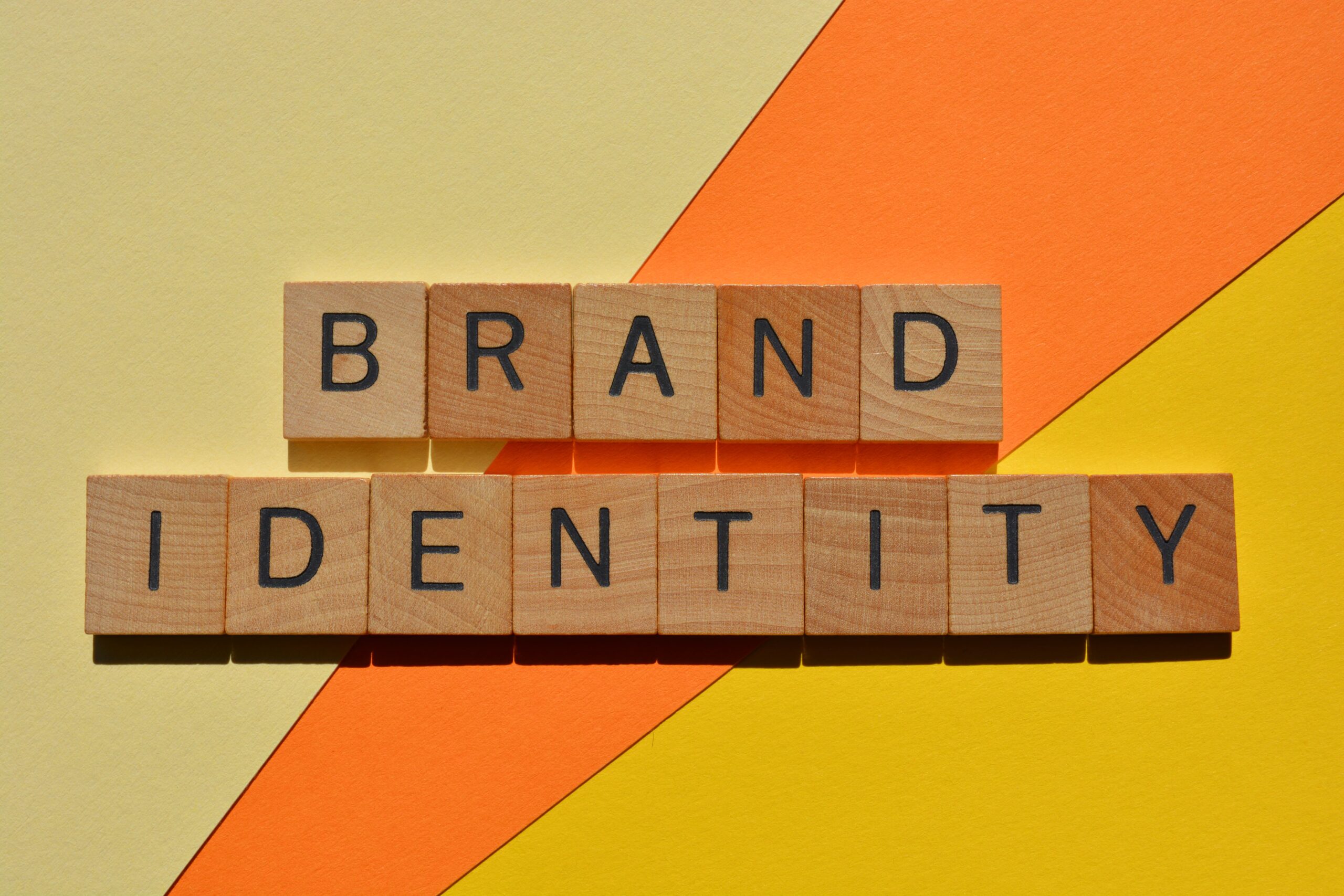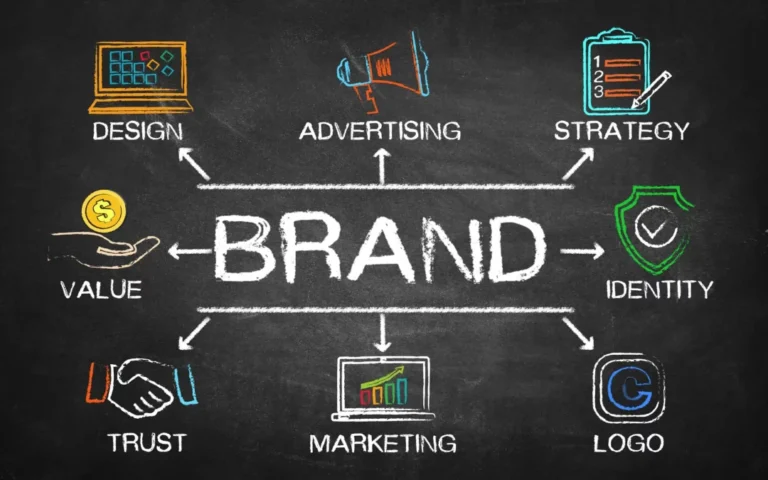The Ultimate Guide to Building a Strong Brand Identity with Stalione Group

The Key to Building a Strong Brand Identity
In today’s competitive market, understanding your target audience is more critical than ever for shaping a strong brand identity. Effective audience research can make the difference between a brand that resonates with its audience and one that falls flat. This blog explores the importance of audience research, strategies for identifying and understanding your target demographic, and highlights recent statistics and data to underscore these points.
The Importance of Audience Research
Audience research is foundational to building a brand that connects with its customers. Knowing who your audience is, what they need, and how they think allows you to tailor your messaging, products, and services to meet their expectations effectively. A well-defined target audience helps in crafting a brand identity that speaks directly to the people most likely to engage with and remain loyal to your brand.
According to a 2023 report by HubSpot, companies that conduct regular audience research are 466% more likely to report successful lead generation efforts. Furthermore, a study by Salesforce found that 76% of consumers expect companies to understand their needs and expectations, highlighting the necessity for brands to invest in comprehensive audience research.
Strategies for Identifying Your Target Demographic
1. Market Segmentation
Market segmentation involves dividing a broad consumer or business market into sub-groups based on shared characteristics such as demographics, psychographics, geographic, and behavioural factors. This approach allows for more precise marketing strategies.
2. Customer Surveys and Feedback
Direct feedback from customers through surveys, interviews, and focus groups provides valuable insights into their preferences, pain points, and expectations. According to a report by SurveyMonkey, 70% of businesses find customer surveys to be their most effective feedback tool.
3. Social Media Analytics
Social media platforms offer a treasure trove of data about user behaviour and preferences. Tools like Facebook Insights, Twitter Analytics, and LinkedIn Analytics help brands understand the demographics and interests of their followers.
4. Website Analytics
Using tools like Google Analytics, businesses can track visitor behaviour on their website, including which pages are most visited, how long users stay, and the paths they take through the site. This data helps in understanding what content resonates most with your audience.
5. Competitor Analysis
Analysing the audience of your competitors can provide insights into your potential customers. Tools like SEMrush and Ahrens can help identify the demographic and psychographic profiles of your competitors’ audiences.
Understanding Your Target Audience
Once you’ve identified your target demographic, the next step is to understand them deeply:
1. Create Buyer Personas
Buyer personas are detailed profiles of your ideal customers based on data and research. These personas help in visualizing and empathizing with your customers, making it easier to tailor your marketing efforts.
2. Monitor Customer Interactions
Regularly monitor interactions with your customers across various touchpoints, such as customer service, social media, and email communications. This ongoing analysis helps in staying updated with changing customer preferences and behaviours.
3. Analyse Purchasing Patterns
Understanding how and why customers make purchasing decisions can inform your marketing and sales strategies. This includes analysing the factors that influence their buying decisions, such as price sensitivity, brand loyalty, and product features.
4. Utilize CRM Systems
Customer Relationship Management (CRM) systems can centralize and analyse customer data, providing insights into customer behaviour, preferences, and lifecycle stages. A study by Gartner found that businesses using CRM systems can see a 29% increase in sales and a 34% improvement in customer satisfaction.
Incorporating audience research into your brand strategy is essential for building a strong, resonant brand identity. By employing strategies such as market segmentation, customer feedback, and analytics,businesses can gain a deeper understanding of their target audience. This understanding allows for more personalized and effective marketing efforts, ultimately driving customer engagement and loyalty. In an era where consumer expectations are higher than ever, investing in audience research is not justbeneficial—it’s necessary for sustained success.
By leveraging the power of data and research, brands can create meaningful connections with their audience, fostering a loyal customer base and achieving long-term growth.
Creating a Memorable Logo: Insights and Best Practices
A logo is more than just a symbol; it is the face of your brand, encapsulating your business’s identity and values in a single, recognizable image. A well-designed logo not only fosters brand recognition but also builds trust and credibility with your audience. In this blog, we will explore essential principles of logo design, best practices, and provide guidance on creating a logo that truly reflects your brand’s values and personality.


A memorable logo should be simple, relevant, versatile, timeless, and memorable. Simplicity ensures easy recognition, relevance aligns with your brand, versatility works across formats, timelessness stays effective over time, and memorability leaves a lasting impression. Iconic examples include Apple and Nike, highlighting these principles.
Best Practices for Logo Design
1. Research and Inspiration
Start by researching your industry, competitors, and design trends. Gather inspiration from successful logos but ensure your design is unique.
2. Understand Your Brand
Clearly define your brand’s values, mission, and personality. This understanding will guide your design choices, ensuring your logo accurately represents your brand.
3. Sketch Ideas
Begin with hand-drawn sketches. This allows for free-flowing creativity without the constraints of digital tools. Sketch multiple variations before finalizing a design.
4. Choose the Right Colours
Colours evoke emotions and convey messages. Select colours that align with your brand’s personality and appeal to your target audience. For instance, blue often represents trust and professionalism, while red can signify energy and passion.
5. Select Appropriate Typography
The font used in your logo should complement the design and reflect your brand’s tone. Whether it’s modern, classic, playful, or sophisticated, choose typography that enhances your brand’s image.
6. Seek Feedback
Share your logo designs with others to gather feedback. This can provide valuable insights and help you identify potential improvements.
7. Test for Versatility
Ensure your logo looks good in different sizes and across various mediums, from digital screens to print materials. Test its effectiveness in monochrome as well.
8. Refine and Finalize
After incorporating feedback and making necessary adjustments, refine your design. Ensure all elements are balanced and harmonious.
Designing a Logo That Reflects Your Brand
1. Identify Core Values
Start by researching your industry, competitors, and design trends. Gather inspiration from successful logos but ensure your design is unique.
2. Tell a Story
Think about the story you want your logo to tell. For instance, if sustainability is a key value, incorporate elements that reflect nature or eco-friendliness.
3. Keep Your Audience in Mind
Design with your target audience in mind. Understand their preferences and expectations to create a logo that resonates with them.
4. Unique Symbols and Imagery
Use unique symbols and imagery that are relevant to your brand. Avoid generic or clichéd elements that do not add value to your logo.
Creating a memorable logo is a blend of art and strategy. By adhering to design principles and best practices, and ensuring your logo reflects your brand’s values and personality, you can develop a powerful visual identity that resonates with your audience. A well-crafted logo is an investment in your brand’s future, fostering recognition, trust, and loyalty among your customers.
Take the time to research, brainstorm, and refine your design, and you’ll create a logo that stands out and leaves a lasting impression.
Choosing Brand Colours and Typography: Crafting Your Brand’s Visual Identity
In the world of branding, colours and typography are more than mere aesthetic choices; they are powerful tools that communicate your brand’s personality, values, and message. The psychology behind colour and typography plays a significant role in how your audience perceives and interacts with your brand. This blog will delve into the psychology of colour and typography in branding, offering practical tips for selecting colours and fonts that align with your brand identity.
The Psychology of Colour in Branding
Colours evoke emotions and associations, influencing how people feel about a brand. Understanding the psychological impact of colours can help you choose the right palette for your brand. Here’s a breakdown of what different colours typically represent:

Colours evoke emotions and associations, influencing how people feel about a brand. Understanding the psychological impact of colours can help you choose the right palette for your brand. Here’s a breakdown of what different colours typically represent:
Tips for Selecting Brand Colours
1. Align with Brand Values
Choose colours that reflect your brand’s core values and mission.
2. Identify Core Values
Start by researching your industry, competitors, and design trends. Gather inspiration from successful logos but ensure your design is unique.
3. Create Contrast
Use contrasting colours to make important elements stand out.
4. Maintain Consistency
Ensure consistency across all brand materials for cohesive branding.
5. Test and Refine
Conduct A/B testing to see how different colours perform with your audience
The Role of Typography in Branding
Typography is another crucial element of brand identity, affecting readability, tone, and perception. The right font can enhance your brand message, while a poor choice can detract from it. Here’s a look at different font categories and their typical associations.
Serif Fonts
Traditional, reliable, and formal. Commonly used by established brands (e.g., Times New Roman).
Serif Fonts
Traditional, reliable, and formal. Commonly used by established brands (e.g., Times New Roman).
Sans-Serif Fonts
Modern, clean, and straightforward. Favoured by tech and contemporary brands (e.g., Arial, Helvetica).
Script Fonts
Elegant, creative, and personal. Used in fashion and lifestyle brands (e.g., Brush Script).
Display Fonts
Bold, unique, and attention-grabbing. Perfect for headlines and logos (e.g., Impact).
Tips for Selecting Typography
1. Match Your Brand Tone
Ensure the font style reflects your brand’s personality.
2. Prioritize Readability
Choose fonts that are easy to read across different devices and sizes.
3. Limit Font Families
Use no more than two or three font families to maintain a cohesive look
4. Ensure Versatility
Select fonts that look good in both print and digital formats.
5. Test Hierarchy
Create a visual hierarchy with different font weights and sizes for headings, subheadings, and body text.
Combining Colours and Typography
The interplay between colours and typography can significantly impact your brand’s visual identity. Here are some tips for combining them effectively:
Harmonize Elements
Ensure that your colour palette and typography work well together to create a unified brand look.
Use Contrast Wisely
Employ contrasting colours and font weights to highlight important information.
Maintain Consistency
Apply your chosen colours and fonts consistently across all brand touchpoints to reinforce brand recognition.
Consider some successful brands and how they use colour and typography

Choosing the right colours and typography is essential for crafting a strong brand identity. By understanding the psychology behind these elements and applying best practices, you can create a visual identity that resonates with your audience and reinforces your brand message. Remember, your brand’s colours and fonts are more than design choices; they are integral parts of your brand’s story and identity. Invest time and thought into selecting them, and your brand will be well-positioned to make a lasting impression.
Developing Brand Guidelines: The Blueprint for Consistent Branding
Brand guidelines are essential for maintaining a consistent and cohesive brand identity across all platforms and touchpoints. They serve as a comprehensive manual that outlines how to communicate your brand’s visual and verbal elements, ensuring that everyone involved in representing your brand does so consistently. In this blog, we will discuss the importance of brand guidelines and provide a step-by-step guide for creating them.
The Importance of Brand Guidelines
Consistency is key to building a strong and recognizable brand. Brand guidelines help achieve this by:
1. Ensuring Uniformity
They provide clear instructions on how to use brand elements, ensuring that every piece of communication, whether it’s a social media post or a billboard, looks and feels the same.
2. Strengthening Brand Identity
Consistent use of brand elements reinforces your brand identity and makes it more recognizable to your audience.
3. Facilitating Collaboration
They serve as a reference point for everyone involved in creating brand materials, from designers to marketers, ensuring that everyone is on the same page.
4. Enhancing Professionalism
Consistent and cohesive branding presents a professional image, building trust and credibility with your audience.
Step-by-Step Guide to Creating Comprehensive Brand Guidelines
1. Define Your Brand Core
Start by clearly defining your brand’s mission, vision, and values. This foundational step sets the tone for all subsequent guidelines.
Mission Statement
What is your brand’s purpose?
Mission Statement
What is your brand’s purpose?
1. Define Your Brand Core
Start by clearly defining your brand’s mission, vision, and values. This foundational step sets the tone for all subsequent guidelines.
Mission Statement
What is your brand’s purpose?
Vision Statement
What future do you aspire to create?
Core Values
What principles guide your brand’s actions?
2. Establish Your Brand Voice and Tone
Describe how your brand communicates with its audience. This includes
Voice
The overall style of communication (e.g., friendly, professional, witty).
Tone
Adjustments to the voice depending on the context (e.g., more formal in a press release, more casual on social media).
Provide examples of appropriate and inappropriate usage to guide your team.
3. Design Your Visual Identity
This section covers all visual elements of your brand:
Logo Usage
The overall style of communication (e.g., friendly, professional, witty). Include variations of your logo (colour, black-and-white, horizontal, vertical) and guidelines on where and how to use each one. Specify minimum sizes, clear space requirements, and incorrect usages.
Colour Palette
Define your primary and secondary colours with specific colour codes (RGB, HEX, CMYK). Provide examples of how to use these colours in different contexts.
Typography
Specify the fonts for headings, body text, and any other specific use cases. Include guidelines on font sizes, line spacing, and hierarchy.
Imagery
Describe the style of images that represent your brand. This could include guidelines on photography style, illustrations, and iconography.
4. Create Templates
This section covers all visual elements of your brand:
Business Cards
Include layout, typography, and colour usage.
Email Signatures
Provide a standardized format.
Social Media Posts
Define the look and feel of your posts across various platforms.
Presentation Slides
Ensure consistency in company presentations.
5. Outline Brand Applications
Explain how your brand elements should be applied across different mediums:
Print Materials
Guidelines for brochures, flyers, posters, etc.
Digital Platforms
Rules for website design, social media profiles, and online ads.
Merchandise
Standards for branded merchandise like apparel, stationery, etc.
6. Set Up Brand Governance
Define the roles and responsibilities for maintaining brand consistency:
Brand Manager
The person responsible for overseeing the implementation of brand guidelines.
Approval Processes
Outline the process for approving new brand materials.
Training
Provide training materials and sessions for employees to understand and use the brand guidelines effectively.
7. Make Guidelines Accessible
Ensure that your brand guidelines are easily accessible to everyone who needs them:
Digital Document
Create a PDF or online document that can be easily shared.
Brand Portal
Develop an online portal where guidelines, assets, and templates can be accessed and downloaded.
8. Review and Update Regularly
Brand guidelines should evolve as your brand grows and market trends change. Regularly review and update your guidelines to ensure they remain relevant and effective.
Developing comprehensive brand guidelines is an investment in your brand’s future. By providing clear instructions on how to use your brand’s visual and verbal elements, you ensure consistency, strengthen your brand identity, facilitate collaboration, and present aprofessional image. Follow this step-by-step guide to create brand guidelines that will serve as a reliable reference for everyone involved in representing your brand, ensuring your brand remains strong, cohesive, and recognizable across all touchpoints.
Building Brand Consistency Across Platforms
Exploring Strategies for Ensuring Consistent Branding Across All Marketing Channels
Maintaining brand consistency across all marketing channels is crucial for creating a cohesive and recognizable brand image. Here are some effective strategies to ensure consistent branding:
1. Develop Comprehensive Brand Guidelines
As previously discussed, comprehensive brand guidelines serve as a manual for maintaining consistency. Ensure these guidelines cover all aspects of your brand, including visual elements, tone of voice, and messaging. Make them easily accessible to all team members and partners.
2. Centralize Brand Assets
Use a digital asset management system to store and organize all brand assets, such as logos, images, fonts, and templates. This central repository ensures that everyone uses the correct and most up-to-date assets.
3. Training and On boarding
Provide training for new employees and partners on your brand guidelines. Regular workshops and updates help ensure that everyone understands and adheres to the brand standards
4. Regular Audits and Reviews
Conduct regular audits of your marketing materials to ensure they comply with brand guidelines. Address any inconsistencies immediately to maintain a cohesive brand image.
5. Consistent Messaging
Ensure that your brand’s messaging is consistent across all channels. This includes the tone of voice, key messages, and value propositions. Consistent messaging helps reinforce your brand identity and build trust with your audience.
6. Cross-Channel Coordination
Coordinate your marketing efforts across different channels to ensure a unified brand experience. For example, align your social media content with your email marketing campaigns and website updates.
Discussing the Impact of Brand Consistency on Consumer Perception and Trust
Brand consistency plays a significant role in shaping consumer perception and building trust. Here’s why it matters:
1. Reinforces Brand Identity
Consistent branding helps reinforce your brand identity, making it easier for consumers to recognize and remember your brand. A strong and consistent brand identity differentiates you from competitors and creates a lasting impression.
2. Builds Trust and Credibility
Consistency in branding conveys professionalism and reliability. When consumers encounter a consistent brand experience across all touchpoints, it builds trust and credibility, making them more likely to engage with your brand and make a purchase.
3. Enhances Brand Loyalty
Consistent branding fosters a sense of familiarity and connection with your audience. When consumers know what to expect from your brand, they are more likely to develop loyalty and advocate for your brand.
4. Improves Marketing Effectiveness
Consistent branding improves the effectiveness of your marketing efforts. Clear and consistent messaging resonates better with your audience, leading to higher engagement rates and better conversion rates.
Engaging Your Audience
Offering Tips for Fostering Engagement and Building a Community Around Your Brand
1. Create Valuable Content
Provide content that offers value to your audience, such as educational articles, how-to guides, and industry insights. Valuable content keeps your audience engaged and positions your brand as an authority in your industry.
2. Encourage Interaction
Foster interaction by asking questions, encouraging comments, and responding to feedback. Engaging with your audience in a meaningful way helps build a sense of community and loyalty.
3. Leverage User-Generated Content
Encourage your audience to create and share content related to your brand. User-generated content not only increases engagement but also serves as authentic social proof.
4. Host Events and Webinars
Organize events, webinars, and live Q&A sessions to connect with your audience in real time. These events provide opportunities for direct interaction and engagement.
5. Personalize Communication
Use data and insights to personalize your communication with your audience. Personalized messages and offers resonate better with your audience, leading to higher engagement.
6. Build a Social Media Community
Use social media platforms to build a community around your brand. Engage with your followers regularly, share user-generated content, and participate in relevant conversations.
Highlighting the Role of Social Media and Other Platforms in Brand Building
Social media and other digital platforms play a crucial role in brand building. Here’s how they contribute:
1. Increased Reach and Visibility
Social media platforms provide a vast audience, increasing your brand’s reach and visibility. Consistent and engaging social media presence helps attract and retain followers.
2. Direct Interaction with Audience
Social media allows for direct interaction with your audience. This real-time engagement helps build relationships and trust with your followers.
3. Showcase Brand Personality
Social media provides an opportunity to showcase your brand personality and values. Use these platforms to tell your brand story, share behind-the-scenes content, and humanize your brand.
4. Amplify Content
Use social media to amplify your content and reach a wider audience. Share blog posts, videos, and other content to drive traffic to your website and other platforms.
5. Gather Feedback and Insights
Social media platforms are valuable tools for gathering feedback and insights from your audience. Use this information to improve your products, services, and overall brand experience.
6. Build a Community
Use social media to build a community of loyal followers who advocate for your brand. Engage with your audience regularly, provide valuable content, and create a sense of belonging.
By implementing strategies for brand consistency and engaging your audience effectively, you can build a strong, recognizable, and trusted brand that resonates with your audience and drives long-term success.
Exploring Tools and Techniques for Tracking Brand Awareness, Sentiment, and Loyalty
To effectively measure the success of your brand identity efforts, leveraging various tools and techniques is essential:
1. Google Analytics
This tool provides detailed insights into website traffic and user behaviour. Key metrics like page views, bounce rate, and average session duration help assess website engagement and effectiveness.
2. Social Media Analytics Tools
Platforms like Facebook Insights, Twitter Analytics, Instagram Insights, and LinkedIn Analytics offer valuable data on audience engagement and demographics.
Hootsuite
A social media management tool that aggregates analytics from multiple platforms.
Sprout Social
Provides detailed reports on social media performance and audience sentiment.
3. Survey Tools
Tools like SurveyMonkey and Google Forms allow you to gather direct feedback from your audience.
Customer Satisfaction Surveys
Assess customer satisfaction and identify areas for improvement.
NPS Surveys
Measure customer loyalty and likelihood to recommend your brand.
4. Sentiment Analysis Tools
Tools like Brandwatch, Mention, and Sprinklr analyse online conversations to gauge brand sentiment.
Natural Language Processing (NLP)
Technologies that analyse text data to determine sentiment and identify trends.
5. Customer Relationship Management (CRM) Systems
CRMs like Salesforce, HubSpot, and Zoho help track customer interactions and loyalty.
Customer Retention Metrics
Monitor customer retention rates and identify patterns in repeat purchases.
6. Email Marketing Analytics
Platforms like Mailchimp and Constant Contact provide insights into email campaign performance.
Open Rates and Click-Through Rates
Measure how effectively your email campaigns engage recipients.
7. Brand Tracking Studies
Periodic surveys and studies conducted by research firms to track brand awareness and perception over time.
Millward Brown and Ipsos
Examples of firms that offer comprehensive brand tracking services.
Discussing Key Metrics for Evaluating the Effectiveness of Your Brand Identity Efforts
Evaluating the effectiveness of your brand identity efforts is crucial for understanding how well your brand resonates with your audience and achieving your business goals. Here are some key metrics to consider
1. Brand Awareness
This measures how well your brand is recognized by your target audience. High brand awareness indicates that your brand is top-of-mind for consumers.
Impressions
The number of times your brand is displayed or seen, whether through ads, social media posts, or website visits.
Reach
The total number of unique users who have been exposed to your brand content.
Search Volume
The number of searches for your brand name or related keywords on search engines.
2. Brand Sentiment
This metric assesses how consumers feel about your brand, indicating the overall public perception.
Sentiment Analysis
Monitoring social media, reviews, and other online content to gauge positive, negative, or neutral sentiments about your brand.
Customer Reviews and Ratings
Analyzing feedback on platforms like Google, Yelp, and industry-specific sites.
3. Brand Loyalty
Measuring brand loyalty helps understand how likely customers are to return and recommend your brand.
Customer Retention Rate
The percentage of customers who continue to purchase from your brand over a specific period.
Net Promoter Score (NPS)
A metric that measures customer willingness to recommend your brand to others.
Repeat Purchase Rate
The percentage of customers who make multiple purchases.
4. Engagement Metrics
These indicate how actively your audience interacts with your brand content.
Social Media Engagement
Likes, shares, comments, and mentions on platforms like Facebook, Instagram, Twitter, and LinkedIn.
Website Engagement
Metrics such as page views, time on site, bounce rate, and click-through rates.
5. Sales and Revenue Metrics
Directly linking brand efforts to sales performance.
Revenue Growth
Measuring the increase in revenue over time, attributable to brand efforts.
Conversion Rates
The percentage of visitors who complete a desired action, such as making a purchase or signing up for a newsletter.
Customer Acquisition Cost (CAC)
The cost associated with acquiring a new customer.
By utilizing these tools and techniques, businesses can gain a comprehensive understanding of their brand’s performance and make data-driven decisions to enhance their brand identity efforts. Regularly monitoring and analysing these metrics helps in adapting strategies, improving brand perception, and ultimately driving business growth.





